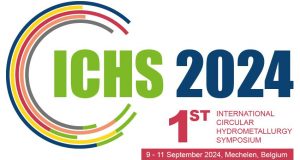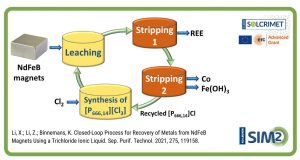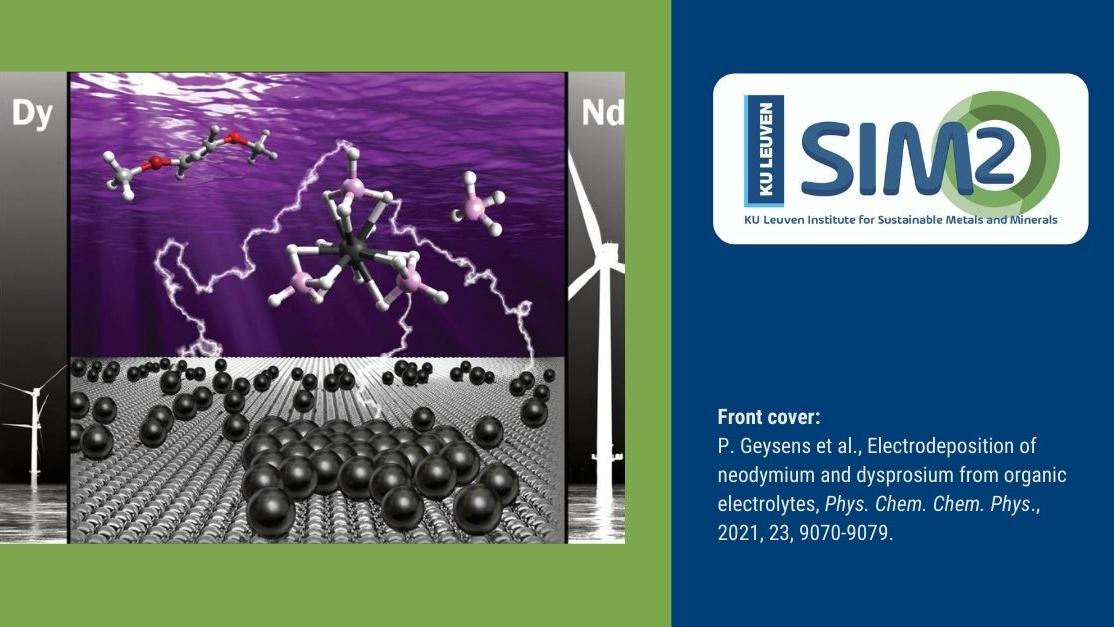A team of researchers from SIM² KU Leuven, University of Leiden and University of Birmingham carried out the first Life Cycle Inventory (LCI) on the production of SmCo5. These permanent magnets do not contain any other elements than samarium and cobalt, hence exhibiting a simpler composition than the Sm2Co17 and NdFeB permanent magnets. The obtained LCI for the production of SmCo5 revealed that the highest impact does not derive from the rare-earth element samarium, but from the cobalt in the magnet. The analysis was carried out with respect to the production of NdFeB permanent magnets, whose highest impact derives – on the contrary – from the rare-earth elements.
Comparing the environmental impact between SmCo and NdFeB magnets
The question that moved the research was if SmCo magnets can be an environmentally friendly alternative to NdFeB magnets and, to give a more immediate response, the analysis was performed on the basis of a previous work published on NdFeB magnets by Sprecher and co-workers.
Both for NdFeB and SmCo, the impact of the production process from cradle-to-gate has been considered, excluding the use and the end-of-life stages. The basis for the calculation is the magnetic energy per mass unit of NdFeB permanent magnets.
For the two kind of permanent magnets, the production routes are also very similar, including steps of mining and beneficiation, metal separation to obtain the rare-earth oxide, magnet alloy preparation, aligning, pressing and sintering and, finally, electroplating and magnetising. Only the stages of REO reduction differ, although without significant impact differences.
NdFeB is the greener option
The conclusion is that the SmCo5 is a less sustainable choice than NdFeB. In fact, whereas the rare-earth elements neodymium and dysprosium represent the lion’s share of the impact for the NdFeB permanent magnets, the impact of the rare-earth element samarium is much less significant than the impact of cobalt in SmCo5 magnets.
In particular, the cobalt production is the stage that has, overall, the largest contribution in most of the defined impact categories. Which are these categories? And how is the contribution of the other SmCo5 production stages? How does the impact differ with respect to production of NdFeB permanent magnets? These are the questions addressed in detail in the paper.
Full reference of paper
Gwendolyn Bailey, Martina Orefice, Benjamin Sprecher, Mehmet Ali Recai Önal, Enrique Herraiz, Wim Dewulf, Karel Van Acker, Life cycle inventory of samarium-cobalt permanent magnets, compared to neodymium-iron-boron as used in electric vehicles, Journal of Cleaner Production, 286 (2021), 125294, https://doi.org/10.1016/j.jclepro.2020.125294
Acknowledgements
The research leading to these results has received funding from the European Community’s Horizon2020 programme ([H2020/2014–2019]) under Grant Agreement no. 674973 (MSCA-ETN-DEMETER). This publication reflects only the authors’ view, exempting the community from any liability. Project website: https://etn-demeter.eu/.
Featured image: Two of the authors – Gwendolyn Bailey and Martina Orefice – at the European Researchers Night 2017 with Sylvia Guillaume, Vice-President at the time of the European Parliament

 European Training Network for the Design and Recycling of Rare-Earth Permanent Magnet Motors and Generators in Hybrid and Full Electric Vehicles (DEMETER)
European Training Network for the Design and Recycling of Rare-Earth Permanent Magnet Motors and Generators in Hybrid and Full Electric Vehicles (DEMETER)



